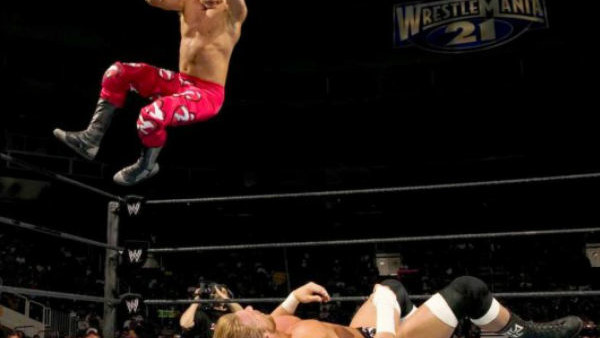10 Greatest High-Flyers Of The Pre-Attitude Era
It's a bird! It's a plane! It's a human being acting like both of those things!

What is it about watching a human body flying through the air that makes us want to leave our own feet and break out into applause? Is it the science? Do we appreciate the trajectory these men and women are able to achieve using nothing but their own launch velocity and momentum? Or is it something a bit more primal?
Oh who f**king cares! Just shut up and watch them swan dive thirty feet onto that other person and enjoy it!
These types of mesmerising, dangerous maneuvers have certainly become much more prominent in recent years, but it's important to remember that the modern superstars didn't invent high-flying moves.
It's true. Believe it or not, superstars were propelling themselves through the air long before Jeff Hardy or AJ Styles ever set foot in a ring.
So, with that in mind, let's pay homage to the risk-takers, the innovators, and the fearless showoffs that first made human flight look possible, if only for a second or two.
10. Dynamite Kid

No list of high-flying innovators would be complete without one of the original, plucky underdogs; Dynamite Kid.
In an effort to make up for what was, at the time, considered an extremely small stature, Kid implemented a rich arsenal of top turnbuckle attacks that had never been seen before, but have since become staples in the business.
The Kid's legacy is evident in just about any match you watch today where aerial attacks are present, as everyone from Chris Benoit to Jay Lethal adapted significant chunks of his move set into their own bag of tricks.
His diving headbutt off the top turnbuckle, in particular, was seen as an absolutely insane attack in his day, much like RVD's Van Terminator was when he first unveiled the coast-to-coast chair-assisted dropkick to the world.
Unfortunately, the manner in which the Dynamite Kid sustained an injury that led to the beginning of the end of his career himself was not the result of a risk-taking maneuver, but a fluke back spasm that occurred when trying to jump over Cowboy Bob Orton's prone body.
Luckily, he managed to secure a large number of classic matches before his injuries caused his performance to start slipping. In fact, some of those were with the next wrestler on this list...